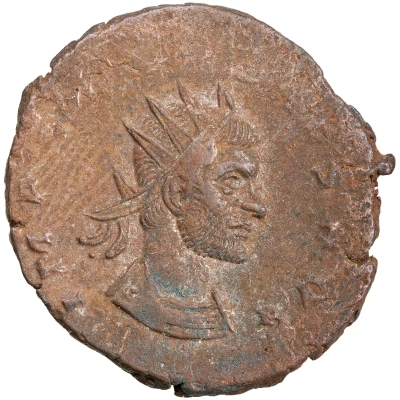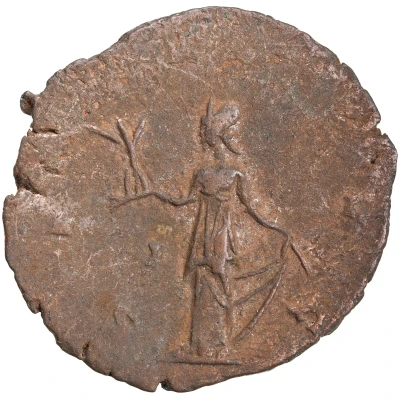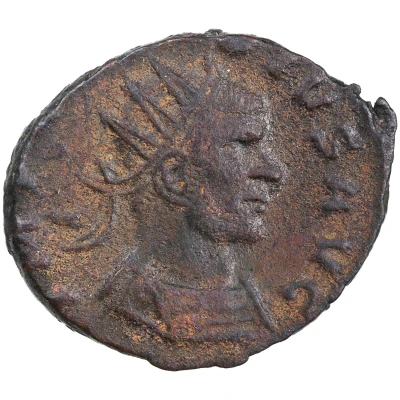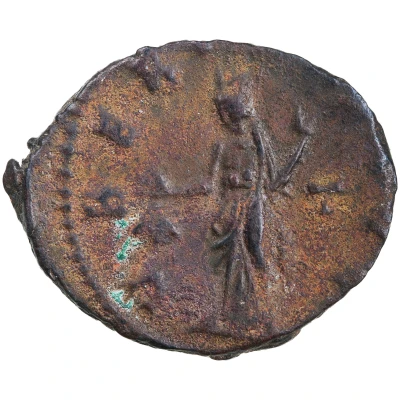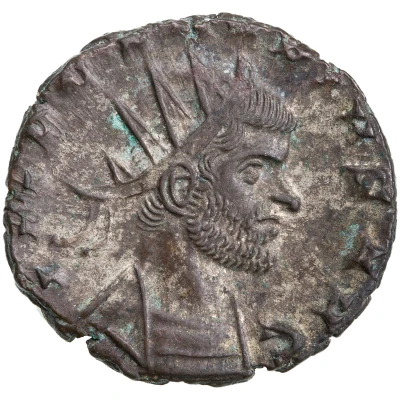
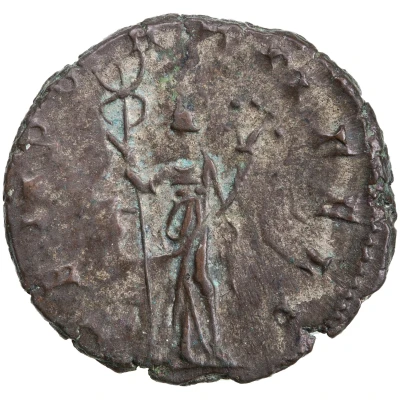

© American Numismatic Society (ANS)
Antoninianus - Claudius II Gothicus TEMPORVM FELI or TEMPORVM FELIC; Felicitas
| Silver | 3 g | 18.5 mm |
| Issuer | Rome › Roman Empire (27 BC - 395 AD) |
|---|---|
| Emperor | Claudius II (Marcus Aurelius Claudius) (268-270) |
| Type | Standard circulation coin |
| Years | 268-270 |
| Value | Antoninianus (1) |
| Currency | Antoninianus, Reform of Caracalla (AD 215 – 301) |
| Composition | Silver |
| Weight | 3 g |
| Diameter | 18.5 mm |
| Shape | Round (irregular) |
| Technique | Hammered |
| Orientation | Variable alignment ↺ |
| Demonetized | Yes |
| Updated | 2024-10-05 |
| Numista | N#290281 |
|---|---|
| Rarity index | 95% |
Reverse
Felicitas, draped, standing left, holding caduceus in right hand and cornucopiae in left hand.
Script: Latin
Lettering: TEMPORVM FELI or TEMPORVM FELIC
Translation:
Temporum Felicitas.
Fortunate times.
Comment
Mass varies: 2.1–4.37 g;Diameter varies: 17.5–20 mm;
Example of this type:
American Numismatic Society (ANS)
Source:
Online Coins of the Roman Empire (OCRE)
Interesting fact
One interesting fact about the Antoninianus coin featuring Claudius II Gothicus is that it was issued during a time of great turmoil in the Roman Empire. Claudius II, also known as Claudius Gothicus, was a military leader who became emperor in 268 AD after the death of his predecessor, Gallienus. He was known for his victories against the Goths and other barbarian tribes, and his reign marked a brief period of stability in the empire after years of civil wars and external threats. Despite this, the empire continued to decline, and the coinage of this period reflects the economic and political challenges of the time. The Antoninianus coin, which was introduced during the reign of Claudius II, was a new denomination that replaced the earlier denarius and was intended to address inflation and debase the currency. However, the coin's silver content was gradually reduced over time, and by the late 3rd century, it had become a copper coin with a thin silver plating, indicating the empire's financial struggles.
